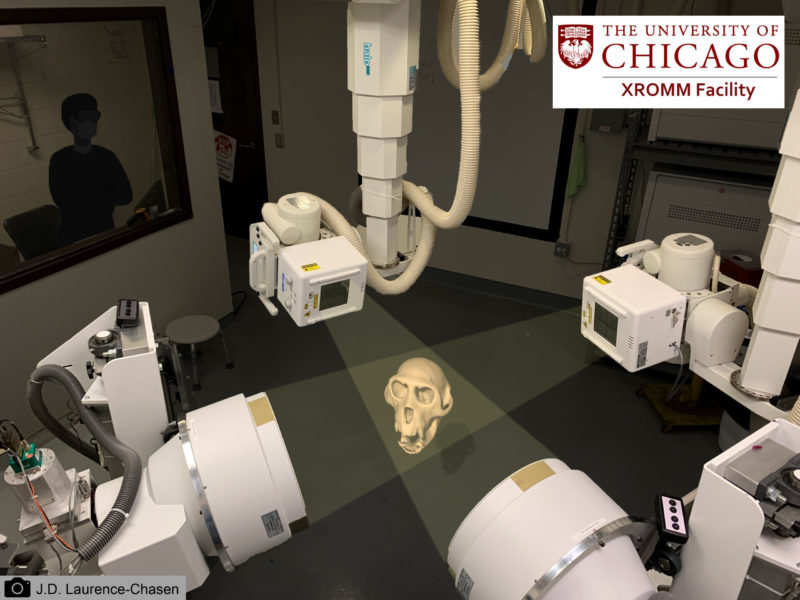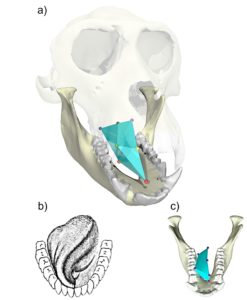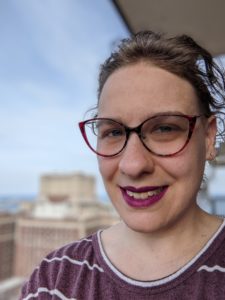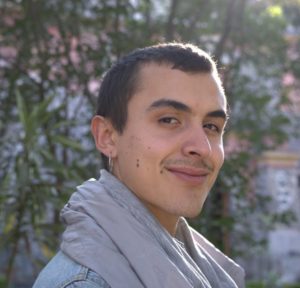By Mateo Rull Garza
When people eat and drink, their tongues are busy doing all kinds of wild things, but the exact way tongues move was a complete mystery until 1954. This was when Abd-el-Malek sketched various tongue postures he observed inside the mouth of individuals missing their front teeth. Sixty-eight years later, cutting-edge, three-dimensional, x-ray-based technology allows scientists to measure precisely how tongues achieve these postures.

Building upon Abd-el-Malek’s work, Kara Feilich and colleagues in Callum Ross’s laboratory at the University of Chicago studied how the tongues of macaque monkeys move as they feed. Their research revealed that macaque tongues move in coordination with the opening and closing of the mouth: as the mouth opens, the tongue flexes, twists, and rolls towards one side of the mouth and, as the mouth closes, the tongue retreats and rests below the palate.

The precise, biological mechanisms that control tongue motion remain unknown, but Feilich and her colleagues speculate why the tongue might move in this manner. It all has to do with food being in the ‘right’ spot; meaning in-between the molars so that it can be chewed. Thus, as the mouth opens, the tongue changes its shape and position, pushing food towards the molars: specifically, towards the side of the mouth where the food will be crushed. Then, as the mouth closes, the tongue retreats, allowing the now fragmented food to fall back into the mouth and avoiding a painful tongue bite. Overall, the coordinated motion of the tongue and mouth manipulates food to remain within reach for the teeth to crush it, while it also maintains food inside of the mouth in preparation for the next chew cycle.
In this animation of a macaque chewing, we can see how a reconstructed tongue-volume flexes, twists, and rolls in coordination with the movement of the mouth.
Why should we care about the way tongues move during chewing? Degenerative diseases, such as spinal muscular atrophy, affect one in 9,000 people worldwide, and can often threaten the healthy function of feeding muscles, including those that drive the tongue. In order to treat these dysfunctions, we must first understand how the tongue moves: “If you don’t know how things move, then how can you come up with predictions about what muscles or nerves do?” asks Feilich.

Learn more about Dr. Feilich at http://www.karafeilich.com/
But Feilich has not always been so concerned about primate tongues. Her academic career mostly focused on fish swimming dynamics until she met Callum Ross at the 2020 meeting of the Society for Integrative and Comparative Biology. Thereafter, she began her last job as an academic at the University of Chicago. Since then, Feilich has transitioned to federal consulting, a job that, Feilich argues, “poses some of the same challenges as academic research.” Academics discover problems, come up with solutions, and communicate them to funding institutions. “How is that different from consulting?”, she asks.
I asked Feilich for advice for people having doubts about a life-long career in academia. She said: “Think about what you enjoy, what you value, and make a choice. No matter what, a person’s value is not defined by their profession.”
The author
 Mateo Rull Garza is a native Mexican who immigrated to Massachusetts in 2016. He graduated from Frontier Regional High School in 2018 and immediately began his Bachelor of Science degree in Biology at UMass Lowell. A passion for scientific research led Mateo to spend almost four years investigating the biological mechanisms of axolotl feeding, as well as a summer studying primate speech evolution at the University of Chicago. Mateo will begin working as a researcher and outreach scientist at the UMass Amherst Stockbridge School of Agriculture in May 2022. In the future, he will specialize in Ecology and Evolutionary Biology, and aspires to become a writer.
Mateo Rull Garza is a native Mexican who immigrated to Massachusetts in 2016. He graduated from Frontier Regional High School in 2018 and immediately began his Bachelor of Science degree in Biology at UMass Lowell. A passion for scientific research led Mateo to spend almost four years investigating the biological mechanisms of axolotl feeding, as well as a summer studying primate speech evolution at the University of Chicago. Mateo will begin working as a researcher and outreach scientist at the UMass Amherst Stockbridge School of Agriculture in May 2022. In the future, he will specialize in Ecology and Evolutionary Biology, and aspires to become a writer.
Visit his website at www.mateorullgarza.squarespace.com

